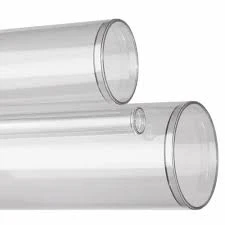ኅዳር . 15, 2024 21:23 Back to list
water pipe fittings
Understanding Water Pipe Fittings A Comprehensive Overview
Water pipe fittings are critical components in any plumbing system, serving as the connection points between pipes, fixtures, and appliances. They come in various shapes, sizes, and materials, designed to accommodate the diverse needs of water distribution systems in residential, commercial, and industrial applications. This article aims to provide a comprehensive overview of water pipe fittings, covering their types, materials, installation, and maintenance.
Types of Water Pipe Fittings
Water pipe fittings can be categorized into several types based on their functionality
1. Elbows These fittings are used to change the direction of the water flow, typically at 90 or 45 degrees. Elbows are essential for routing pipes around corners or obstacles within a plumbing system.
2. Tees Shaped like the letter T, these fittings allow for the branching of the water flow, connecting three pipes in a single unit. Tees are commonly used when multiple outlets are required from a single line.
3. Couplings Couplings connect two straight pipes together, allowing for the extension of pipe length. They are crucial for creating longer runs in plumbing systems.
4. Reducers These fittings create a transition from a larger diameter pipe to a smaller diameter pipe, accommodating different flow rates and pressures. Reducers are vital in systems where varying pipe sizes are necessary.
6. Caps and Plugs Caps are used to seal the end of a pipe, while plugs insert into a pipe to stop the flow of water. Both fittings are essential for maintenance and system modifications.
Materials Used in Water Pipe Fittings
water pipe fittings

Water pipe fittings are manufactured from various materials, each with distinct characteristics and advantages
1. PVC (Polyvinyl Chloride) PVC fittings are lightweight, durable, and resistant to corrosion and chemicals. They are commonly used for residential water systems, irrigation, and drainage due to their affordability and ease of installation.
2. CPVC (Chlorinated Polyvinyl Chloride) Similar to PVC, CPVC can withstand higher temperatures, making it suitable for hot water systems. Its ability to resist corrosion is especially beneficial in areas with aggressive water supplies.
3. Copper Copper fittings have been a traditional choice for plumbing due to their durability, corrosion resistance, and natural antibacterial properties. While more expensive than plastic options, their longevity often justifies the initial investment.
4. Steel Galvanized steel and black steel fittings are typically used in industrial applications. They offer strength and durability but are prone to corrosion, requiring protective coatings or treatments.
5. Brass Brass fittings combine strength with resistance to corrosion and are commonly used in water supply lines and fixtures. Their ability to withstand high pressures makes them ideal for various applications.
Installation and Maintenance
Proper installation of water pipe fittings is crucial for ensuring a leak-free and efficient plumbing system. Before installing any fitting, it is essential to clean the pipe ends to remove any debris or moisture, which could compromise the seal. For plastic fittings, solvent cement or adhesives are often used, while threaded metal fittings require tape or sealing compounds to create watertight connections.
Regular maintenance is also important to extend the lifespan of water pipe fittings. Inspect for leaks, corrosion, or signs of wear and tear. Any damaged fittings should be replaced promptly to prevent water loss and potential property damage. Keeping the plumbing system well-maintained can save homeowners from costly repairs and water bills.
Conclusion
Water pipe fittings are vital components of any plumbing system. Understanding the various types, materials, and proper installation practices is crucial for efficiently managing water distribution in residential, commercial, and industrial environments. By adhering to regular maintenance schedules and promptly addressing any issues, one can ensure a dependable and long-lasting plumbing system that meets their needs. Whether you are a homeowner, a plumber, or someone interested in plumbing systems, gaining knowledge about water pipe fittings will empower you to make informed decisions, enhancing the reliability of water systems.
-
PVC Transparent Sheet Roll - Durable & Flexible PVC Plastic Sheet Roll for Industrial & Home Use
NewsJun.24,2025
-
High-Quality PVC PPR Pipes and Fittings Durable ERA PPR Solutions
NewsJun.10,2025
-
High-Quality Large HDPE Sheets & Large Diameter PVC Pipe Durable Large PVC Pipe Supplier
NewsJun.10,2025
-
High Density Polyethylene Cutting Board - Durable & Food Safe
NewsJun.09,2025
-
3 Inch PVC Pipe for Durable Irrigation Affordable & Reliable
NewsJun.09,2025
-
Premium PPR Plastic Water Pipe Fittings - Durable & Leak-Free
NewsJun.09,2025

